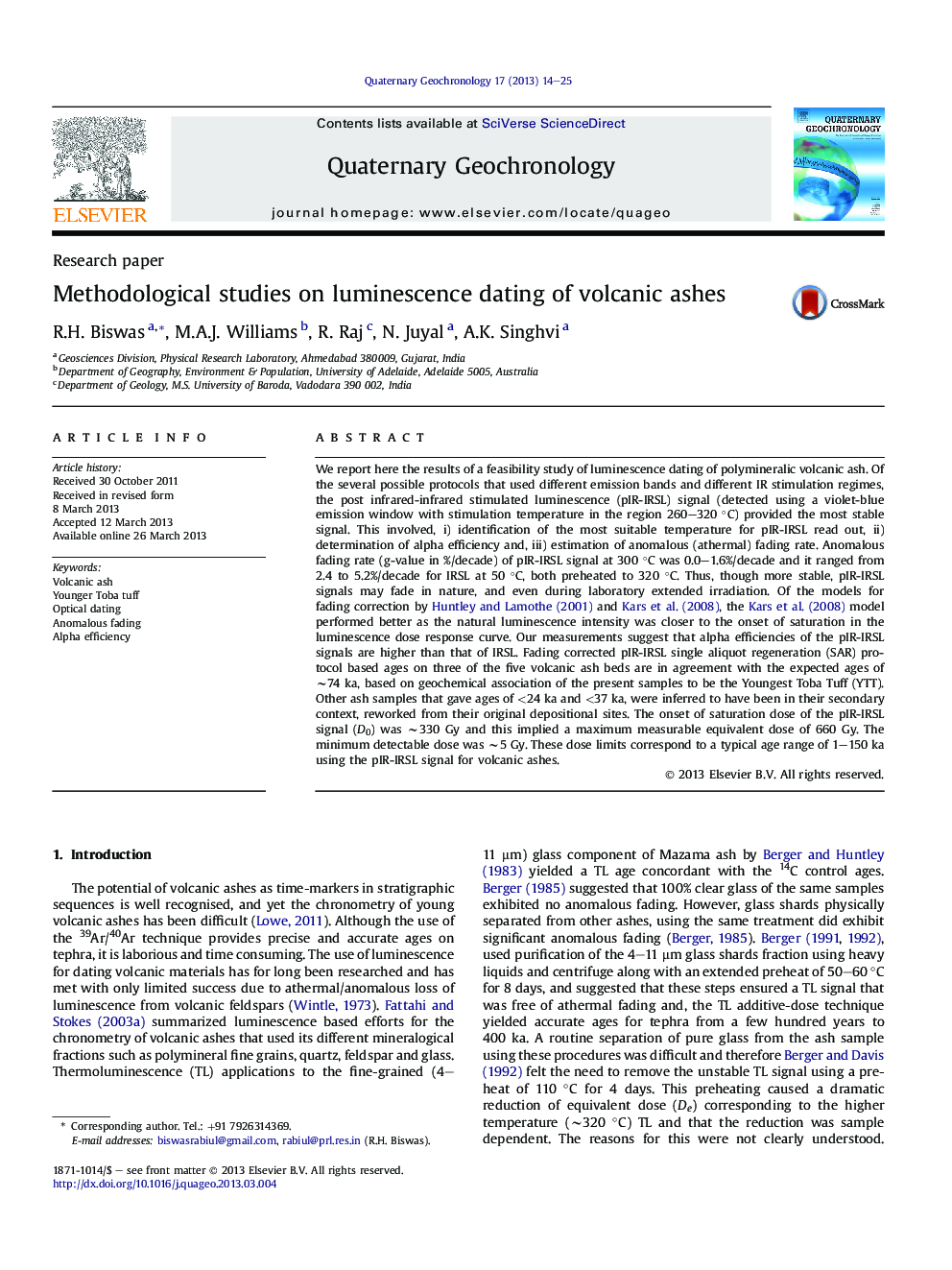| کد مقاله | کد نشریه | سال انتشار | مقاله انگلیسی | نسخه تمام متن |
|---|---|---|---|---|
| 4725054 | 1639859 | 2013 | 12 صفحه PDF | دانلود رایگان |
• Optical dating of polymineralic volcanic ash using pIR-IRSL SAR protocol.
• pIR-IRSL at 260–320 °C provides the least faded signal.
• Dating range of pIR-IRSL signal of polymineral volcanic ash is 1–150 ka.
• Alpha efficiency of pIR-IRSL signal is about 30% higher than IRSL signal.
• Dating of 3 ash beds in India indicate the YTT origin.
We report here the results of a feasibility study of luminescence dating of polymineralic volcanic ash. Of the several possible protocols that used different emission bands and different IR stimulation regimes, the post infrared-infrared stimulated luminescence (pIR-IRSL) signal (detected using a violet-blue emission window with stimulation temperature in the region 260–320 °C) provided the most stable signal. This involved, i) identification of the most suitable temperature for pIR-IRSL read out, ii) determination of alpha efficiency and, iii) estimation of anomalous (athermal) fading rate. Anomalous fading rate (g-value in %/decade) of pIR-IRSL signal at 300 °C was 0.0–1.6%/decade and it ranged from 2.4 to 5.2%/decade for IRSL at 50 °C, both preheated to 320 °C. Thus, though more stable, pIR-IRSL signals may fade in nature, and even during laboratory extended irradiation. Of the models for fading correction by Huntley and Lamothe (2001) and Kars et al. (2008), the Kars et al. (2008) model performed better as the natural luminescence intensity was closer to the onset of saturation in the luminescence dose response curve. Our measurements suggest that alpha efficiencies of the pIR-IRSL signals are higher than that of IRSL. Fading corrected pIR-IRSL single aliquot regeneration (SAR) protocol based ages on three of the five volcanic ash beds are in agreement with the expected ages of ∼74 ka, based on geochemical association of the present samples to be the Youngest Toba Tuff (YTT). Other ash samples that gave ages of <24 ka and <37 ka, were inferred to have been in their secondary context, reworked from their original depositional sites. The onset of saturation dose of the pIR-IRSL signal (D0) was ∼330 Gy and this implied a maximum measurable equivalent dose of 660 Gy. The minimum detectable dose was ∼5 Gy. These dose limits correspond to a typical age range of 1–150 ka using the pIR-IRSL signal for volcanic ashes.
Journal: Quaternary Geochronology - Volume 17, June 2013, Pages 14–25
